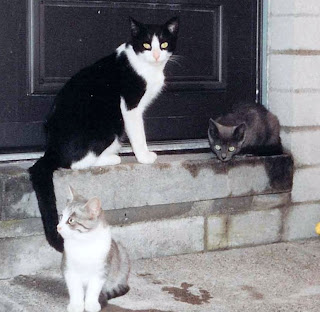 |
Tripod was born without a rear leg but it didn't cause any
problems until something started to grow at the stub. The
vet removed the stub and now she's doing fine.
|
Our feline Acute Veterinary Care Program – initiated last
January -- got off to a very slow start.
Partly because we wanted it to -- so we could do some beta testing
before we got too deep into it – and partly because the system we set up to
handle the applications was cumbersome to the point of scaring caregivers, vet
clinics and ourselves away from it. Learning from our early participants, we've fine-tuned the program
to strip out most of the red tape and now the program seems to work almost as
smoothly as our seasoned spay/neuter program does.
Full Full details on the program are on our website, but here are
the key changes:
We no longer require Care Credit applications from all applicants – only those not receiving food stamps. SNAP recipients simply fax us written confirmation of their account and we accept that as proof of financial need.
We now include the cost of the initial vet exam to determine what’s wrong with the cat in our eligible expenses. Most veterinary assistance programs exclude this first visit and we originally followed suit. Ironically by doing so, those most in need of our financial help were least likely to participate since they couldn't pay for the initial exam.
We no longer require the vet clinic provide us with a written quote of the charges before we approve the cat. We simply limit our vouchers to covering reasonable and customary services and supplies to treat the acute care issue we describe on the voucher – and limit the amount of aid we can provide to a maximum of $300/cat.
And, instead of faxing a voucher to the clinic while the cat is waiting for treatment, we now e-mail the voucher to the Caregiver before the appointment is made. They simply print out the voucher (at home or at the library) and take it with the cat to any of our participating clinics who accept it as a “coupon” to cover the work described on it up to the $300 limit.
 |
| 11-Year old Tessa had a growth on her
head that started to grow. The vet
removed it and found that it was benign.
|
Our mission is to keep cats in their homes – off the streets
and out of shelters. We’ve always know
that sterilization was the key to this.
But – as kittens grow into cats – acute health issues invariably arise
and can threaten the cat’s long-term home as much as not being sterilized can. Worse yet – a simple acute care issue left
untreated can result in permanent damage to a cat or even death. We hope by adding this supplemental service
we’ll further our mission of keeping cats in their homes, happy, healthy and
living out their lives with those who love them.





.jpg)









